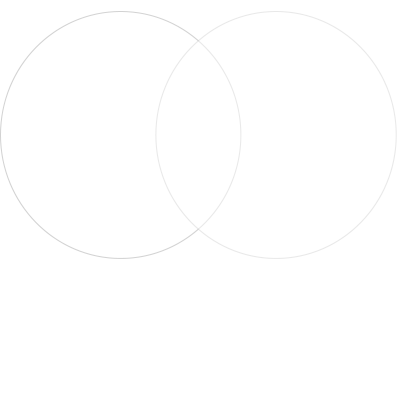
With the continuous development of technology, consumer demand for screens is also changing. From TV screens to mobile phone screens, in addition to improving the performance of digital home appliances, manufacturers will also make changes on the screen, so that consumers can feel the upgrades of the products.
In daily life, TVs and mobile phones are the most intuitive to screen users. There are full screens (mostly LCD panels), curved screens (OLED panels), or folding screens (OLED panels). So, what is the difference between an OLED screen and an LCD screen? How will cell phones and TVs made with them be different?
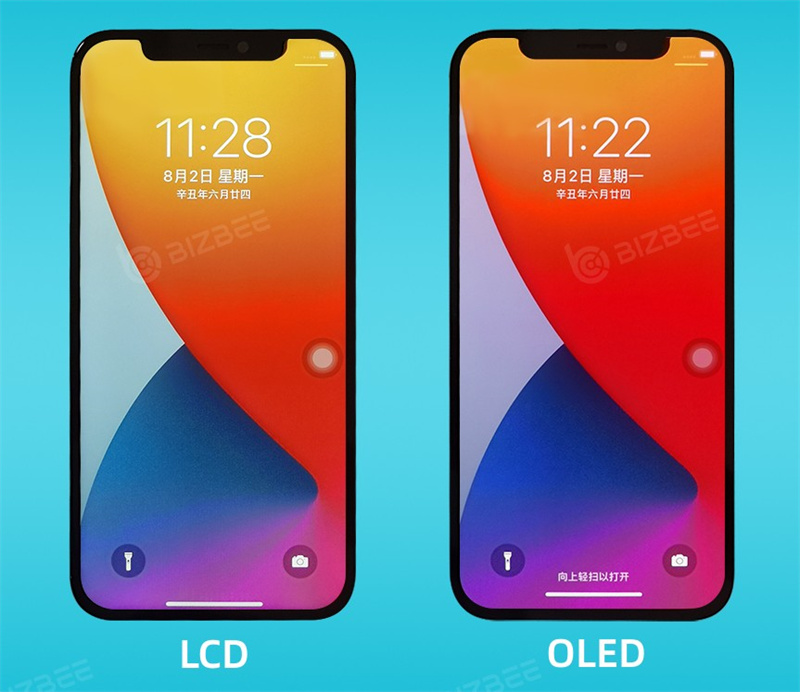
At present, in the flat-panel TV and smartphone technology camps, OLED and LCD are relatively common display technologies in the market, and each display technology occupies a certain market share in their market. Before understanding the difference between OLED and LCD, let's take a look at their respective basic principles.
First, we need to understand the common working principle of these two display technologies. We all know that a screen is composed of countless pixels, which display different colors and combine to form a display screen; each pixel is composed of 3 sub-pixels, which are red (R), green (G), blue (B) three color blocks, namely the three primary colors. When these three colors are mixed in different proportions, a variety of colors can be produced.
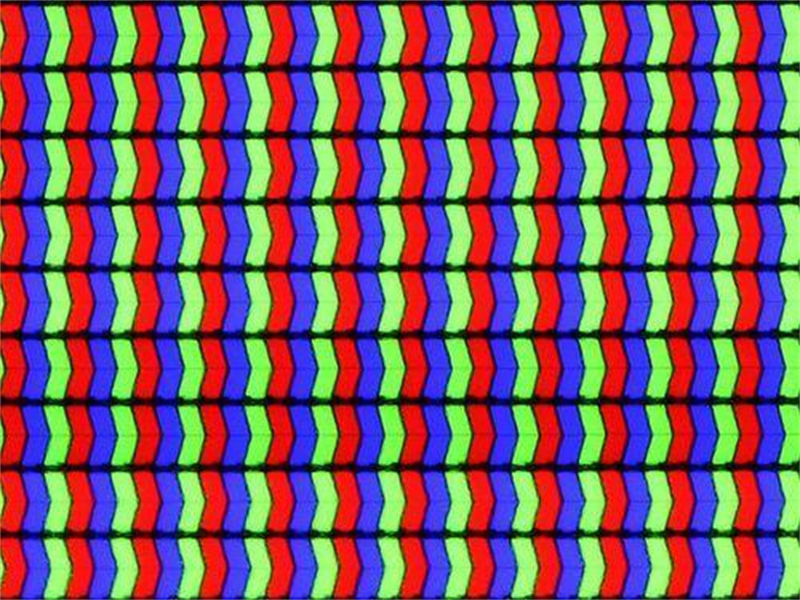
How OLED works

Unlike LCD, OLED has neither a backlight nor a liquid crystal layer. The diode of OLED (Organic Light Emitting Diode) can emit light by itself, and its luminous intensity is proportional to t4he current intensity. Therefore, as long as the control current of each sub-pixel is controlled, It can control the ratio of the three primary colors to modulate various colors.
OLEDs can be divided into PMOLED (passive-driven) and AMOLED (active-driven) by driving. AMOLED originated from Samsung, each pixel is equipped with a TFT (thin film transistor) with a switch, and its driving method is easier to achieve high brightness, high resolution, high color performance, and low power consumption. This type of panel is widely used in consumer electronics.
PMOLED originated from LG. It has a simple structure and easy manufacturing process. It can effectively reduce manufacturing costs and has extremely fast response speed. It has great development potential in displaying simple micro-devices. However, PMOLED will have problems of high power consumption and reduced lifespan, and the product size is limited to about 5 inches.
At present, most of the mainstream OLED screens on the market are AMOLED technology.
How LCD works
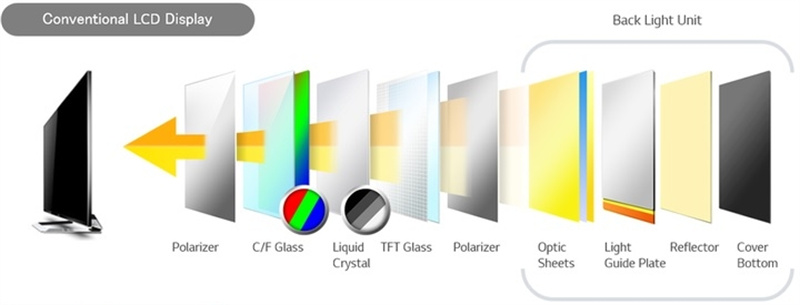
In simple terms, the bottom is the backlight, which is responsible for providing the light source. The middle is the liquid crystal layer, due to the characteristics of the liquid crystal molecules, when different voltages are applied to the liquid crystal layer, the arrangement of the liquid crystal molecules will change. In this way, the liquid crystal layer becomes a valve. By controlling the arrangement direction of the liquid crystal molecules, the amount of light passing through the liquid crystal layer can be controlled. The light passing through the liquid crystal layer then passes through the color filter (CF) to present the light of the corresponding color. The pixel can modulate different light by controlling the ratio of the three colors of the sub-pixels red, green and blue.
Advantages and disadvantages of OLED screen
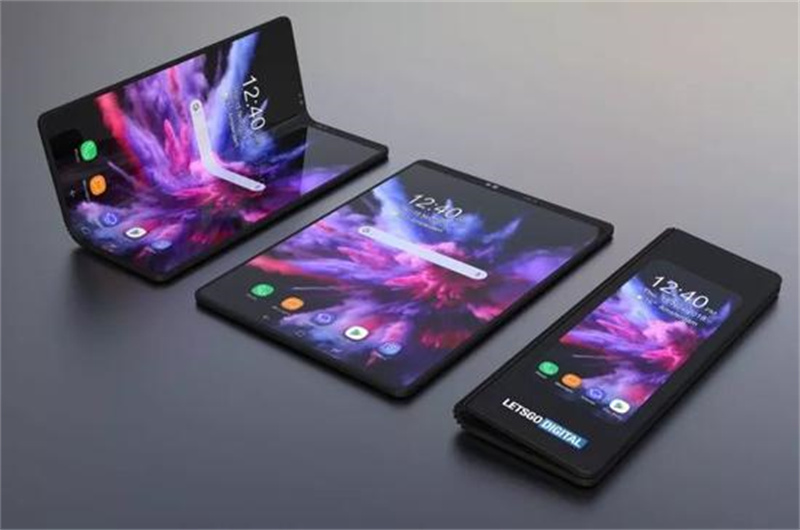
OLED advantages
1. Curved screen: Folding mobile phones will definitely appear in mobile phones in the future, and OLED is the technology born for this kind of screen.
2. Very thin: OLED has its own light-emitting body, so it does not need to be like LCD because it uses two layers of glass, and its natural thickness is also very thin.
3. Brightness: The light-emitting method of OLED is that each pixel is independent, so it can be partially bright without full brightness or full case like LCD.
4. More power saving: Because of this light-emitting method, it has an advantage in power consumption.
5. Bright colors: The picture is much more refined than the LCD screen, and the photos will be more beautiful.
OLED Disadvantages
1. Flash frequency: Because of the dimming method of OLED, it is easy to cause visual fatigue.
2. Short lifespan: OLED has a limited lifespan for pixels due to the material. That is one of the shortcomings of OLED screens.
Advantages and disadvantages of LCD screen
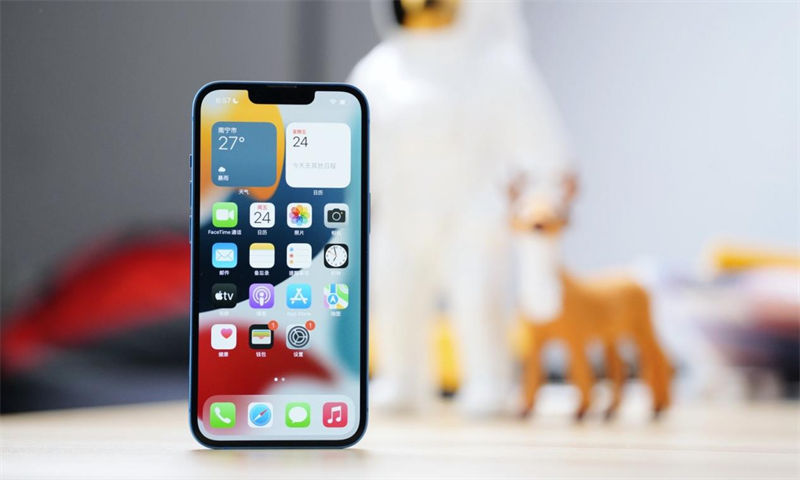
LCD Advantages
1. Long lifespan: Because LCD has developed for a long time, you can use it without worrying that the screen will be broken. LCD is really long-lived.
2. No flickering: The backlight source of the LCD is an independent white LED backlight panel, which does not flicker, so it is more eye-friendly.
3. Cheap: Because LCD has been developed for a long time, the cost has been controlled, even a better LCD screen will not be too expensive, especially compared with OLED, it is definitely cheaper.
LCD Disadvantages
1. Power consumption: Compared with OLED, the power consumption of LCD is indeed much more. It may be that OLED does not consume too much power, but in contrast, this disadvantage of LCD is really obvious.
2. Fingerprint recognition: LCD cannot recognize fingerprints, so it is easy to be eliminated by technology, because the fingerprint recognition function is very basic.
3. Thickness: Mobile phones will become thinner and thinner, but the LCD screen cannot be thinned, so it is really difficult to continuously see the LCD screen in the future with new technologies.
OLED is now better than LCD in many aspects. Although it has defects such as low lifespan and easy visual fatigue, but defects cannot belittle virtues, such as large viewing angle, high contrast, low power consumption, thin and light, folding, and fast effect... These characteristics represent the development direction of mobile phones, which mean that OLED will have a broader future.




